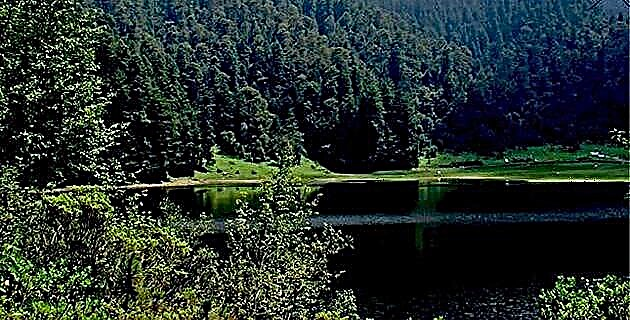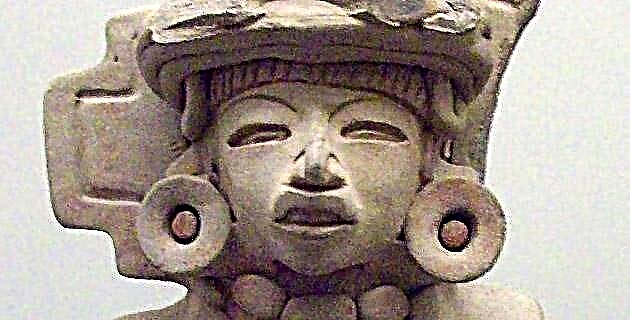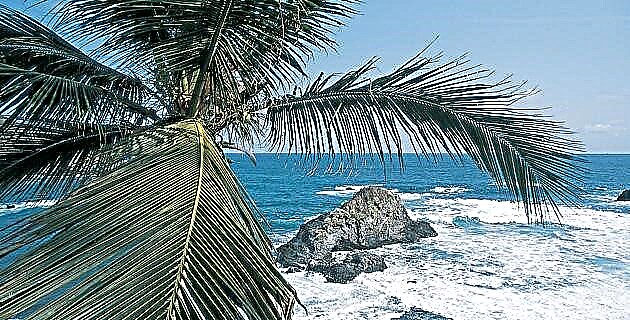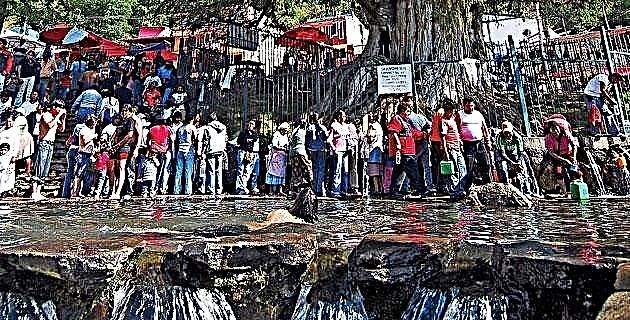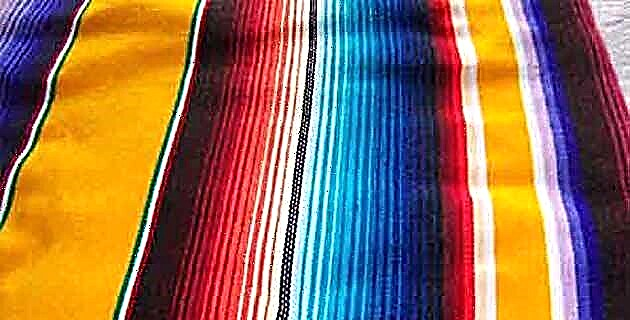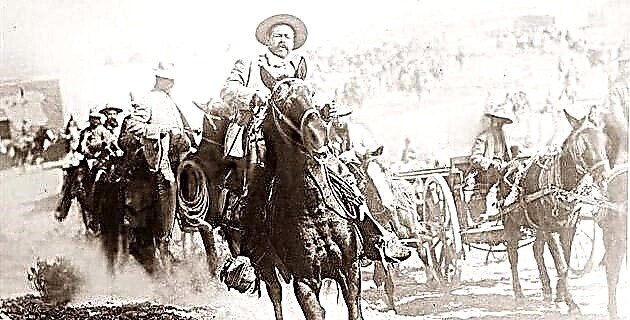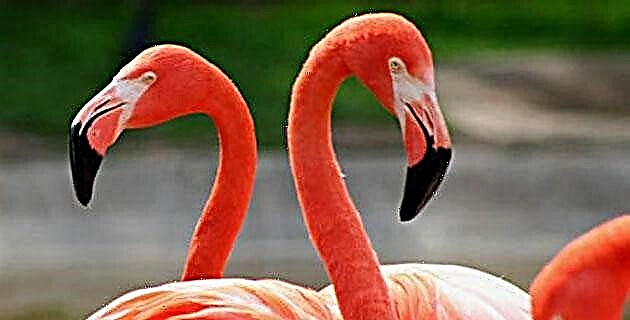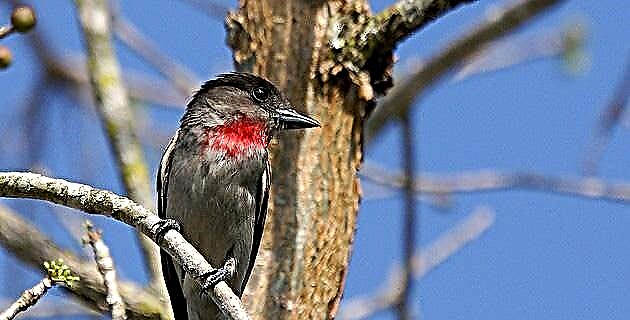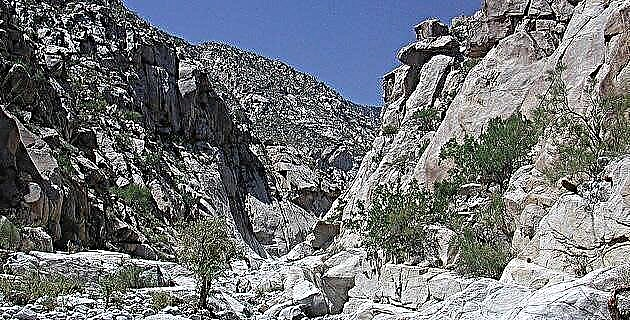
The Devil's Canyon is a window to prehistory where we have the privilege of glimpsing the origins of civilization on our continent.
El Cañón del Diablo is, archaeologically and anthropologically speaking, one of the most important sites in the state of Tamaulipas and Mexico.
Located in one of the most remote areas in the north of the Sierra de Tamaulipas, the canyon was the scene of one of the fundamental episodes in human history: learning to produce what to eat. In this unique mountainous area, in a slow and gradual process that took thousands of years, the first settlers of the Tamaulipas territory evolved from the stage of nomadic hunter-gatherers to the establishment of sedentary agricultural communities, thanks to the domestication of plants. wild, particularly that of corn (2,500 years BC).
Nomadic and semi-nomadic groups of the most remote antiquity, as well as some tribes that conserved an archaic system of life until historical times, occupied hundreds of caves and rock shelters located throughout the length of the canyon, and there they left what today are important vestiges archaeological. However, our interest was focused on the most remarkable, refined and enigmatic cultural evidence of our ancestors: the cave paintings of the Devil's Canyon.
HISTORICAL BACKGROUND
The first formal report on these paintings comes from a report rendered by the “Esparta” Corps of Explorers of the Ciudad Victoria Secondary, Normal and Preparatory School, after a survey carried out in the Sierra de Tamaulipas in December 1941. In that report Three “caves” are described (although they are rather shallow rocky shelters) with cave paintings located in the Cañón del Diablo, in the municipality of Casas.
Years later, between 1946 and 1954, the American archaeologist Richard S. MacNeish, seeking to clarify the development of agriculture and the origins of corn in our continent, carried out important archaeological work on rock shelters and archaeological sites in the same mountains.
Through these works, MacNeish established a chronological sequence of nine cultural phases for the Devil's Canyon: the most primitive and oldest of Tamaulipas, the Diablo phase, dates back to 12,000 years BC. and represents the original nomadic life of the American man in Mexico; It is followed by the Lerma, Nogales, La Perra, Almagre, Laguna, Eslabones and La Salta phases, until culminating with the Los Ángeles phase (1748 AD).
VISIT TO THE DEVIL CANYON
Knowing the historical - or rather prehistoric - background of the Devil's Canyon, we could not resist the temptation to visit one of the cradles of civilization in our country. Thus, together with Silvestre Hernández Pérez, we left Ciudad Mante towards Ciudad Victoria, where we would be joined by Eduardo Martínez Maldonado, a dear friend and great connoisseur of countless caves and archaeological sites in the state.
From Ciudad Victoria we took the road that goes to Soto la Marina, and about an hour later, at the first elevations of the Sierra de Tamaulipas, we turned right along a 7 km dirt road that led us to a small community community; From there we advanced to the last point that we could reach with the truck, a cattle ranch where Don Lupe Barrón, in charge of the property and friend of Don Lalo, received us very kindly.
Explaining the purpose of our visit, he arranged for his son Arnoldo, and Hugo, another young man from the ranch, to accompany us on the expedition. That same day, late in the afternoon, we climbed a ridge in the sierra and descended a tick-infested ravine towards the bottom of a canyon, the course of which we followed downstream until its confluence with the Devil's Canyon; from that point we head south at a very slow pace, until we climb the side of a wide alluvial terrace that rises above the left bank of the stream. We had finally reached the Planilla and Cueva de Nogales.
We immediately explored the cavity, one of the largest and most impressive rock shelters in the Devil's Canyon, and we found on the wall vestiges of cave paintings, most of them little discernible, except for a few handprints in red; We also saw, with sadness, a large amount of modern graffiti made by hunters who have used the coat as a camp.
The next day in the morning we started on foot to where the canyon is born, to explore other sites. After 2 km of the route we find Cave 2, according to the Grupo Esparta numbering, on whose walls two large series of "inscriptions" are worthy of admiration, all of them with red paint, so well preserved that they seem to have been made a short time ago . MacNeish calls these types of drawings "tally marks", that is, "account marks" or "numerical marks", which perhaps represent an archaic numbering system in which the dot and line were used to record the accumulation of a quantity , or in the manner of some rustic agricultural or astronomical calendar; MacNeish thinks that this type of “marks” occurs from very early stages, such as Nogales (5000-3000 BC).
We continue our journey through the channel of the canyon and 1.5 km later we could clearly see Cave 3 on the vertical wall of the cliff. Although they measure between 5 and 6 cm, the cave paintings found in this rock shelter are of great interest. We saw figures that appear to be shamans, a star, men mounted on three-legged animals, a lizard or chameleon, a bird or bat, cows, a design in the form of a "wheel with axes" and a group of characters or human figures that seem wear horns, feathers or some kind of headdress. From the representation of the horseman and the "cattle", possible only during historical times, MacNeish concludes that the paintings were made by the Raisin Indians in the 18th century.
After having walked about 9 km from the Planilla de Nogales, we finally sighted Cave 1. It is a huge cavity within the living rock of the cliff.
The rock manifestations have been preserved quite well, most of them are located in the sky or roof of the shelter. You can see grids, straight lines, groups of lines and points and wavy lines, as well as geometric figures that, according to a relatively recent interpretation of rock art, represent the visions of shamans during altered states of consciousness.
Also on the ceiling are two drawings that are generally associated with stars. Perhaps these drawings are the record of an astronomical phenomenon that occurred almost a thousand years ago, when an object six times brighter than Venus appeared in the constellation of Taurus, visible in broad daylight; In this regard, William C. Miller calculated that on July 5, 1054 A.D. there was a spectacular conjunction of a bright supernova and the crescent moon, this supernova being the explosion of a huge star that gave rise to the great Cancer nebula.
On the ceiling and wall of this rock shelter we also find a regular number of small painted hands, some of them with only four fingers; further down, almost on the floor, is a curious black drawing of what appears to be a tortoise shell.
On the way back to the camp, during the journey we quickly dehydrated due to excessive heat, the reverberation of the sun and physical wear and tear; Our lips began to peel, we walked a few steps in the sun and sat down to rest under the shade of the poplars, imagining that we were drinking a huge and refreshing glass of cold water.
Shortly before arriving at the Sheet, one of the guides commented that six months ago a relative had hidden a plastic jug of water in certain rocks of the stream; Fortunately, he found it and thus relieved a little of the intense thirst that we felt, regardless of the bad smell and taste of the liquid. We started the march again, we climbed the Planilla, and with about 300 m left to reach the camp, I turned to see Silvestre, who was just coming up the slope about 50 m behind me.
However, shortly after we were at the camp, we were surprised that Silvestre was late in arriving, so we immediately went to look for him, but without being able to find him; It seemed incredible to us that he had strayed such a short distance from the camp, and at least I imagined that something worse had happened to him. With less than a liter of water, I decided to stay with Don Lalo one more night at La Planilla, and I told the guides to return to the ranch with the horses to ask for help and to refill us with water.
The next day, very early in the morning, I opened a can of corn to drink the liquid, and after a while I shouted again at Silvestre, and this time he did respond, he had found his way back!
Later one of the guides on horseback arrived with 35 liters of water; We drank until we were full, we hid a jug of water in the rocks of the shelter and we left the Form. Arnoldo, who brought the other animals and came to help us, had later left the ranch by another path, but in the ravine he saw our tracks and turned back.
Finally, after three and a half hours, we were back at the ranch; They offered us a meal that tasted glorious for us, and thus, comforted and calm, we ended our expedition.
CONCLUSIONS
The delicate situation that we live in the Devil's Canyon, a place far from the usual comforts, taught us a great lesson that we should already know: although we have a lot of experience as hikers, we must always take extreme security measures. In similar situations, it is advisable to always carry more water than you think you need, as well as a whistle to make yourself heard in case you get lost, and never, but never, leave any of the members of an excursion alone or lose sight of them.
On the other hand, we experience in our own flesh the anguish that our ancestors must have felt, subjected to the whims of nature, in their daily struggle to survive in these semi-arid lands with such difficult living conditions. Perhaps that anguish to survive forced prehistoric man, in its beginnings, to use the rock manifestations as topographic references to indicate the presence of water, and later to keep a record of the passage of the seasons and predict the arrival of the desired season of rains, expressing on the rocks a complex cosmology by means of which he tried to explain the natural phenomena that escaped his understanding and that were invoked in a propitiatory way. Thus, his spirit, thought and vision of the world were captured in images on the stones, images that are, in many cases, the only testimony we have of their existence.

